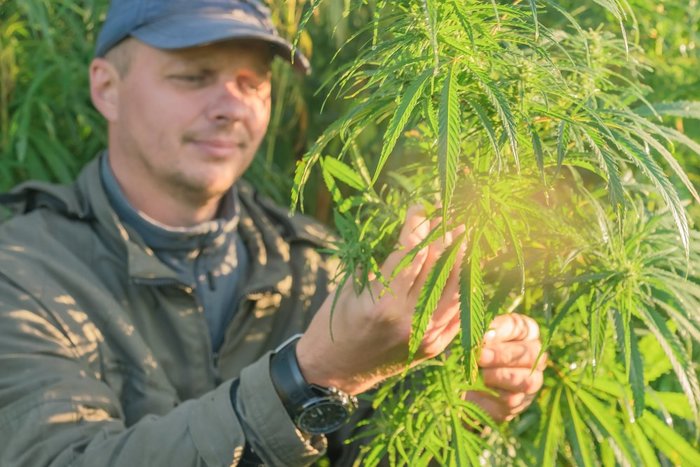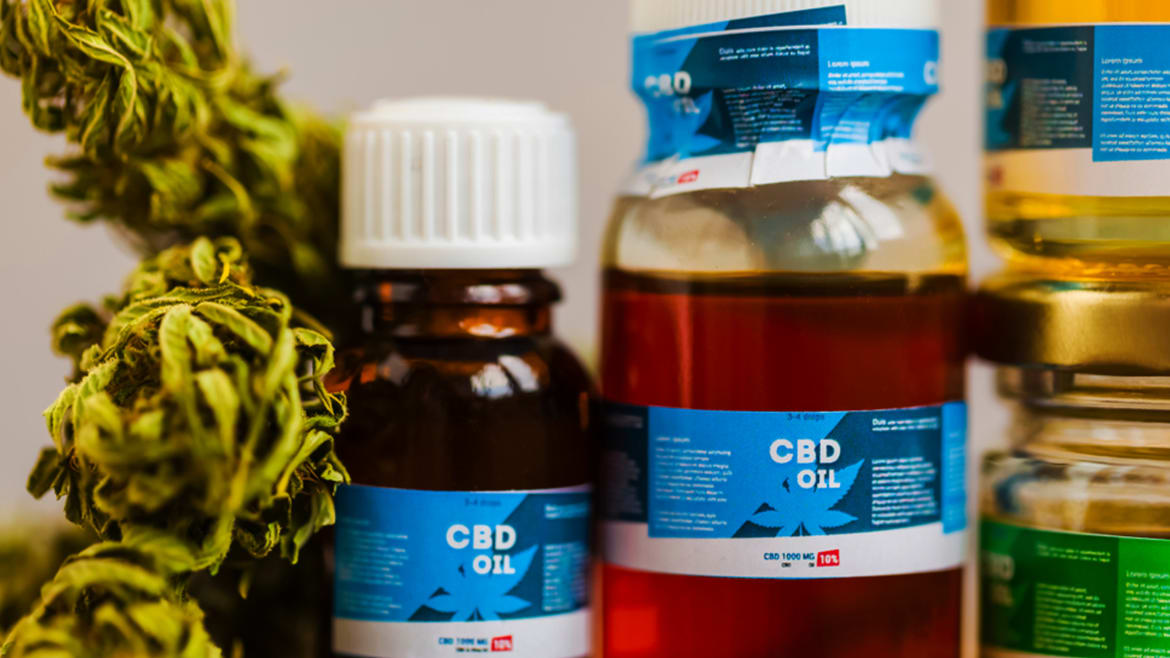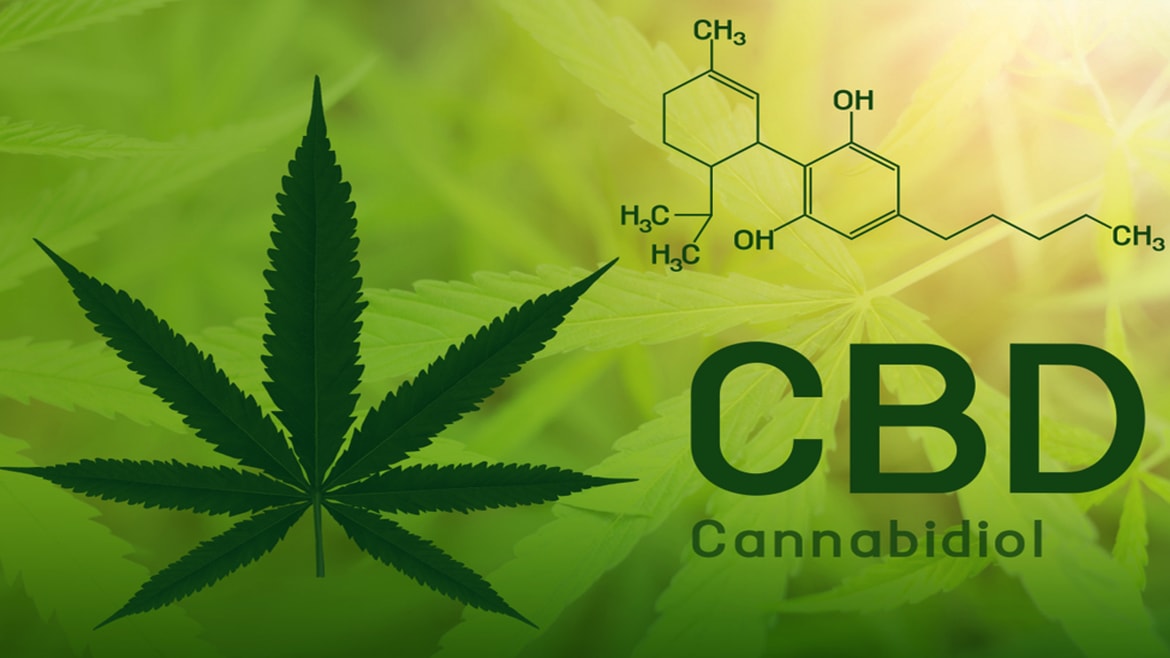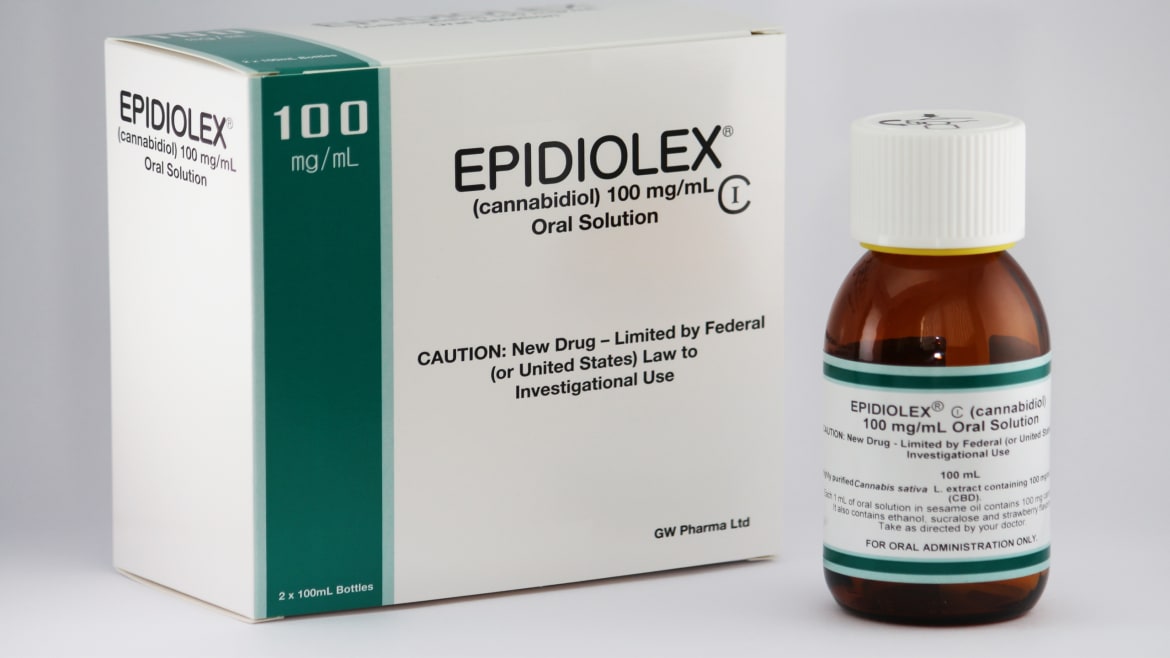By Katie MacBride
Source:
thedailybeast.com

PHOTO ILLUSTRATION BY THE DAILY BEAST
They gave their six-year-old a couple drops of oil to help treat her epilepsy. Child Protective Services, though, was at their door.
In April, a committee at the Food and Drug Administration took the unprecedented step to
recommend for approval Epidiolex, an epilepsy
drug containing a
plant-sourced cannabinoid, cannabidiol (CBD). In June, the FDA will vote on approving the drug, which has been shown in limited studies to be effective for those
suffering from severe epilepsy.
Maria Selva’s seven-year-old daughter, Aliana, has epilepsy and has found relief from seizures with CBD.
But treating her daughter’s seizures with CBD has put Selva at significant risk, and she has mixed feelings about the FDA’s potential approval of Epidiolex. In October 2017, Child Protective Services charged Maria and her husband with “severe medical neglect,” and removed Aliana from her parents’ care.
Aliana Selva was six-years-old and on vacation with her family in Los Angeles when she had her first
tonic-clonic seizure. She had experienced a few mild seizures as an infant, but the doctors assured Maria and her husband, Jo Selva, that these seizures were common and she would likely grow out of them. For nearly four years, the Selvas thought the doctors were right.
Then, on March 31, 2016, Aliana had two seizures.
The Selvas rushed Aliana to the emergency room, where she was examined and released. The doctor said the hospital would forward the exam notes to a neurologist in the Bay Area, where the Selvas lived. When they returned home, a neurologist called and said Aliana needed to be put on the anticonvulsant drug, Keppra.
“I remember asking her, so, is there a diagnosis?” Maria says. “It just seemed so strange, we didn’t even know what was wrong but we were already putting her on medication for it.”
Within a few minutes of giving Aliana the first dose of the drug, Aliana’s personality transformed dramatically.
“Ali’s normally a very sweet, gentle little girl,” Maria says, “After giving her that first dose of Keppra, she was super aggressive and irritable. She went from jumping on the bed, saying she wanted to have a dance party to sobbing and banging her head against the wall. She didn’t care that she was hurting herself. It was completely outside her personality. It was insane. It wasn’t Ali.”
“Keppra rage,” Dr. Bonni Goldstein, former Chief Resident at Los Angeles Children’s Hospital, said immediately when she heard Ali’s story (Aliana goes by both her full name and the nickname). Goldstein hasn’t treated the Selvas and wasn’t previously familiar with their case, but she has dealt with her share of children
with epilepsy, both on and off Keppra. She practiced pediatric emergency medicine for thirteen years before switching gears to focus on cannabinoid therapies. Goldstein has seen Keppra work well for many patients, and she’s seen many others have precisely the reaction Maria described.
The possible behavioral side effects of Keppra in children are
well documented, including hostility and aggression.
Maria took Ali off of the drug after a week. “I was uncomfortable with the whole thing,” Maria said. “We didn’t have a diagnosis, no one explained to me how this medication was supposed to work, how long she needed to be on it, anything.” They hadn’t even met the doctor who prescribed it.
Over the next year, Ali had a handful of absence seizures (characterized by brief lapses in attention, absence seizures usually last 1-2 minutes). A neurologist diagnosed Ali with epilepsy—the first diagnosis she’d received—and ordered an MRI. The results were normal (Normal results for MRIs and/or EEGs are not uncommon in cases of epilepsy).
In May 2017, the Selvas moved to Southern California. That summer, there was a slight uptick in the frequency of Ali’s absence seizures. This development worried the Selvas, but Keppra seemed like an extreme response. Years earlier, they had heard about treating seizures with CBD oil, a non-psychoactive compound found in cannabis. But Maria said, “as soon as I heard it had to do with marijuana, I brushed it off.”
Now, however, desperate for alternatives to Keppra, they started looking into CBD. It had been covered in the national media in 2013 when
Charlotte Figi, a six-year-old with a severe form of epilepsy, dramatically improved after using the oil. “There was so much research about how CBD was non-psychoactive and helpful for kids like Ali,” Maria said. And crucially, there were no significant side effects. A veterinarian friend told Jo about the success she’d had treating epileptic animals with CBD oil. A health store near their home sold CBD oil, so they decided to give it a try. It wasn’t FDA approved, they understood that. But it was better than their child banging her head against the wall in rage.
In July of 2017, Ali started a very low dose of CBD oil, administered orally. “We were really cautious,” Maria said. “For the first few weeks, we only gave her two drops per day. We found out later that the dose was too low to have any impact, but we wanted to start slow.”
At the end of the first week of school, Ali had a brief absence seizure in class. A few after, , Ali had a much more extreme (tonic-clonic) seizure. Maria brought Ali to the emergency room, where she seized a second time. “She wet herself; she may have been biting her tongue,” Maria recalls. “It was awful.”
Frightened by this sudden escalation, the Selvas reluctantly consented to a restarting a daily dose of Keppra IV to stop the seizing. At the same time, they also increased Ali’s dose of CBD.
Once again, the “Keppra rage” returned; Ali was, according to Maria, “hyper, aggressive, clumsy.” Within a week, the Selvas decided to stop administering Keppra. When the Selvas met with a neurologist the following week, they asked about alternatives to the medication; he refused to discuss alternative treatments with them. “This [Keppra] is what she should take; if you don't like it and you want something natural, you need to go somewhere else,” Maria later texted a friend.
Dr. Julie Griffith, a neurologist in San Rafael, California, isn’t familiar with the Selvas case and therefore couldn’t comment on it directly, but she stresses that if one medication doesn’t work for a patient, a neurologist could suggest several other medications that might be better tolerated. According to the Selvas, no such offer was made.
Intent on finding someone who could talk to them about alternatives, the Selvas switched insurance companies. The Selvas also met with school administrators and agreed on a plan regarding Ali’s seizures: If she had one that lasted less than five minutes, the school would call her parents to come pick her up. If it lasted more than five minutes, they’d call the Selvas and an ambulance.
Two weeks later, the plan was enacted. Ali had an absence seizure in class and Jo came to pick his daughter up from school, telling staff they were using CBD oil and looking for a new neurologist after switching insurance plans.
Several days later, Maria received a call from Loretta Lopez of Child Protective Services.
CPS wanted to do a home inspection and assess the safety of Ali’s home environment. “It didn’t sit well with us,” Maria says, “but we also thought, let’s invite them in and show them that we have nothing to hide.”
During the inspection, the Selvas recounted Ali’s medical history and Lopez asked to see the medication Ali was taking. The Selvas produced both the Keppra and the CBD oil, and informed Lopez that they were only using the CBD oil. (The Daily Beast tried to contact Lopez for this story, but the County of Orange Social Services Agency declined on her behalf “due to state confidentiality laws.”)
Maria thought it went well. “She [Lopez] seemed like she was on our side. She kept saying, ‘I know there’s a reason for everything you’re doing, I just want to help you make that clear.’ She told us that she’d get back to us Tuesday or Wednesday with a report.” Maria signed a form saying CPS could access Ali’s medical files as well as a “safety plan” affirming that they would take Ali to the hospital if she had a seizure.
It was an unsettling experience, but the Selvas were more confused than scared. “I figured she was just going to call Tuesday or Wednesday and say everything you said checks out, case closed.’”
Maria was wrong. The following Wednesday, Lopez called Maria saying they needed to have an urgent, in-person meeting. Maria was confused: In her mind, they’d done everything to be accomodating:They’d given permission for CPS to view Ali’s medical records and to speak with her doctor; they’d allowed CPS into their home, shown them the kids’ living environment, and met both parents. How could Lopez still have concerns about her kids’ safety?
The Selvas agreed to meet, but said they wanted an attorney present. This, they were told, was against CPS policy. “You can bring anyone you want,” a senior social worker told the Selvas, “just not an attorney.”
The policy of prohibiting attorneys at “team meetings” is standard in California. Orange County Social Services wouldn’t comment on any particular case but directed The Daily Beast to their policy regarding attorneys at team meetings
here.
Without the protection of a lawyer, the Selvas felt like they needed more time to understand what they were potentially up against. Could they have the meeting over the weekend or the following Monday instead?
‘That won’t work,” Maria recalls the social worker saying, “We’re just going to go ahead and get Juvenile Dependency Court involved.”
“For what?” Maria recalled asking. “We don’t even know what the results of your investigation are or what we’re being charged with.”
The meeting was supposed to be when they found out all that information, the Selvas were told. But by refusing to meet that day without an attorney, the social worker told them, they were “choosing not to participate” and CPS “had no other choice but to move forward with getting a warrant and Juvenile Court.”
When the call ended, Jo and Maria immediately started contacting lawyers. “We were so in the dark,” Maria says. “They said they were going to get a warrant, but for what?”
In retrospect, Maria sees her confusion as naivete. “In this perfect world you picture, you have to be a bad parent to get your child taken away.”
The following evening, Maria and Jo Selva’s child was taken away.
The knock came just after 8 PM on Saturday, October 28. Through the peephole, Maria saw three police officers outside her door. They said they were doing a welfare check.
That’s when Maria started streaming the incident on
Facebook Live. In the video, Jo speaks to the police officers through the closed door. He asks what a welfare check entails, and asks if they have a warrant. The officer explains that they don’t need a warrant for a welfare check. Jo says he and Maria will come outside to talk, but are going to close the door behind them. The police agree. The video is dark, but seconds after opening the door, Jo is handcuffed.
Once in handcuffs, the police tell Jo that they do have a warrant, one that allows them to take Ali into protective custody. The officers read the warrant to the handcuffed Jo and he pleads, “she’s going to freak out if she doesn’t have us by her side. She’s epileptic and everytime she gets anxiety she has seizures.”
The video is over an hour long and concludes with Maria asking Ali, who appears unperturbed and smiling, dressed in Strawberry Shortcake pajamas, what she wants to bring with her to go “spend the night somewhere really nice.”
Ali spent the next three nights at Orangewood Children’s Home in Orange County. Her parents were allowed one supervised 30 minute visit per day. On the second day, Ali started asking to go home. “It had stopped being this adventure for her, Maria said. “Her hair wasn’t brushed and her breath was stinky. I wanted to ask if she was brushing her teeth and everything, but it’s hard.When you only have 30 minutes with your child, are you really going to talk about brushing teeth? She kept asking why she couldn’t come home. I kept saying, ‘I’m sorry; I’m working on it.’”
Epidiolex, the drug which is set for FDA approval, is a product of GW Pharmaceuticals. The FDA was impressed with positive results from three randomized, double-blind, placebo-controlled trials. The
drug will likely be approved for patients with Lennox-Gastaut syndrome and Dravet syndrome, two severe, rare forms of epilepsy. While Aliana's epilepsy is not severe enough to meet the expected criteria for the drug, the studies indicate the therapeutic potential of cannabidiol in treating seizure disorders.
Allison Ray Benavides, a social worker in San Diego and
mother of an epileptic child believes that CPS is targeting vulnerable families with these cases. She told
The Daily Beast, “in San Diego, there’s a group of us moms who have kids with seizure disorders and use CBD oil. There’s only one mom in our group who has had a problem with CPS: the single mom whose husband is in prison.” She believes the Selvas were vulnerable in a different way, “you can draw a clear line from CPS to this young, hispanic family living in a very conservative county (Orange County). If they were white and living in Newport Beach, this never would have happened.”
This rings true to Ursula Kilmer, of Redding, California. She’s been battling CPS for the same reason as the Selvas. Kilmer’s son has Lennox-Gastaut Syndrome (a severe form of epilepsy). When she was able to use CBD oil in lieu of other anticonvulsants, “His seizures stopped completely.” But CPS alleges medical neglect, and Kimler has been ordered to put her son back on drugs that do not prevent his seizures and, she believes, makes them worse.
Kimler has spent the last nine months trying to appease CPS and have the courts condone her use of CBD oil. “I’m exhausted,” she says, “I just want to be able to give my kid the stuff that helps him.”
On November 1, three days after she was taken, the Selvas were granted temporary custody of their daughter and saw, for the first time, what the official charges against them were: “Severe medical neglect.”
Griffith is among the neurologists who think CBD is promising for many cases, but has concerns about the unregulated market and quality control. She also believes more research needs to be done on the effect of CBD on developing brains. That said, when presented with a hypothetical situation in which a parent is treating their child’s seizures with CBD oil, Griffith said, “If they’re trying to treat the seizures, that certainly doesn’t sound like neglect.”
On December 5, 2017, the Selva’s case was dismissed by Juvenile Dependency Court.
To this day, the Selvas don’t know for sure who reported them to CPS. Goldstein understands the confusion that mandated reporters like school nurses and social workers have about cannabinoid therapies. It’s one of the reasons she’s started an
educational program for people who are in a position to intervene.
Goldstein—who stressed that she is a physician unassociated with the cannabis industry— adamantly believes that “[cannabis] must be treated the way you’d treat any other prescription drug; if a family is being responsible and has medical supervision, and is using cannabis to treat a medical condition, you should not call Child Protective Services on them because that is absolutely not neglect.”
As for Aliana, she’s seeing a new neurologist who understands the efficacy of CBD for seizure disorders and is monitoring her closely. Emotionally, however, the trauma of the ordeal lingers. She gets scared at night now, something that never happened before.
Maria understands how she feels. “I thought as a parent, I had rights,” Maria said., “Now there’s this fear that CPS could just come through the door and take my kids away.”
 So is there a difference?
So is there a difference?


 “Being forced to hire an armored truck just to pay taxes or provide payroll isn’t only a hassle – it’s also extremely dangerous,” says Harry Resin, who longs for the day when he can open a business checking account for his cannabis company,
“Being forced to hire an armored truck just to pay taxes or provide payroll isn’t only a hassle – it’s also extremely dangerous,” says Harry Resin, who longs for the day when he can open a business checking account for his cannabis company, 


